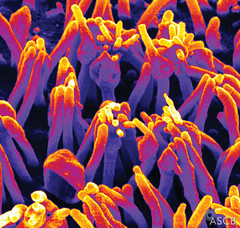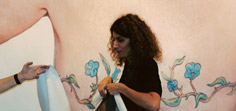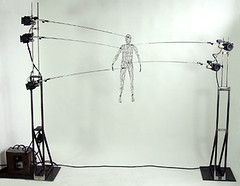Medicinsk Museion søger en publikumsmedarbejder med tiltrædelse snarest muligt (HK-stilling).
Vi er et lille men dynamisk universitetsmuseum med i alt syv faste medarbejdere, der arbejder tæt sammen. Dine hovedopgaver vil være at sælge og organisere omvisninger og andre faglige arrangementer samt stå for en række administrative opgaver, herunder:
- bookning, fakturering og kasseansvar
- telefon- og personkontakt med kunderne/publikum
- koordinator for museets ca. 20 studenteromvisere
- kontor- og serviceopgaver som støtte til husets funktioner
- medvirke til udførelse af publikumsarrangementer
- salgsopgaver, herunder webannoncering m.m.
Du vil indgå i et tæt samarbejde med de øvrige medarbejdere, især AC-formidlingsmedarbejderen.’
Vi leder efter en person som har følgende kvalifikationer:
- en relevant uddannelse
- en åben personlighed og gode samarbejdsevne
- serviceorientering, selvstændig og med ordenssans
- behersker både dansk og engelsk i skrift og tale
- god til Word og Excel samt lyst og evne til at arbejde med både fakturering/kasse og email-baseret
- publikumskommunikation
- lyst til at videreudvikle kontaktfladen med sundhedsvæsnet og det almene publikum
- evne til at holde mange bolde i luften samtidigt
Løn og ansættelsesvilkår
I henhold til gældende overenskomst mellem Finansministeriet og Statsansattes Kartel samt Organisationsaftale for Kontorfunktionærer i Statens Tjeneste. Stillingen aflønnes i løngruppe 3, sats 1, hvor basismånedslønnen p.t. udgør kr. 21.203,17 md. ved en ugentlig arbejdstid på 32 timer.
Stillingen er en deltidsansættelse, pt. med en ugentlig arbejdstid på 32 timer. Arbejdstiden kan gøres fleksibel. Der kan også være perioder med overarbejde, som honoreres efter gældende takster.
For nærmere oplysninger, ring formidlingsmedarbejder Bente Vinge Pedersen, 3532 3821 eller museumschef Thomas Söderqvist, 2875 3801.
Ansøgning
Send din ansøgning bilagt CV samt dokumentation for uddannelse elektronisk — se link her. Vi skal have modtaget din ansøgning senest onsdag den 21. oktober 2009 kl. 12.00. Vi modtager kun elektroniske ansøgninger.
Instituttet ønsker en medarbejdersammensætning, der afspejler det omgivende samfund, og opfordrer alle interesserede uanset alder, køn, race, religion eller etnisk tilhørsforhold til at søge.
Medicinsk Museion, www.museion.ku.dk, er en del af Institut for Folkesundhedsvidenskab, Det Sundhedsvidenskabelige Fakultet, Københavns Universitet. Museet driver forskning, kulturarvsarbejde og udstillingsvirksomhed med fokus på den moderne biomedicin i samspil med kultur og samfund og rummer en af Europas rigeste medicinhistoriske samlinger i det gamle Kgl. Kirurgiske Akademi og tilstødende bygninger i Bredgade.

 As some of you may have noticed,
As some of you may have noticed,  CORPOrealities is the website of a research project “situated on the very boundary of visual and performative arts and biomedicine”, which free-lance Viennese sociologist and artist Christina Lammer has carried out together with a team of visual artists, curators, historians and caregivers at the Medizinische Universität Wien (MUW) during the last five years.
CORPOrealities is the website of a research project “situated on the very boundary of visual and performative arts and biomedicine”, which free-lance Viennese sociologist and artist Christina Lammer has carried out together with a team of visual artists, curators, historians and caregivers at the Medizinische Universität Wien (MUW) during the last five years. Don’t forget to see ‘Assembling Bodies: Art, Science & Imagination’, the major interdisciplinary exhibition at the University of Cambridge’s Museum of Archaeology and Anthropology, when you are in town (45 mins from Stansted airport).
Don’t forget to see ‘Assembling Bodies: Art, Science & Imagination’, the major interdisciplinary exhibition at the University of Cambridge’s Museum of Archaeology and Anthropology, when you are in town (45 mins from Stansted airport).